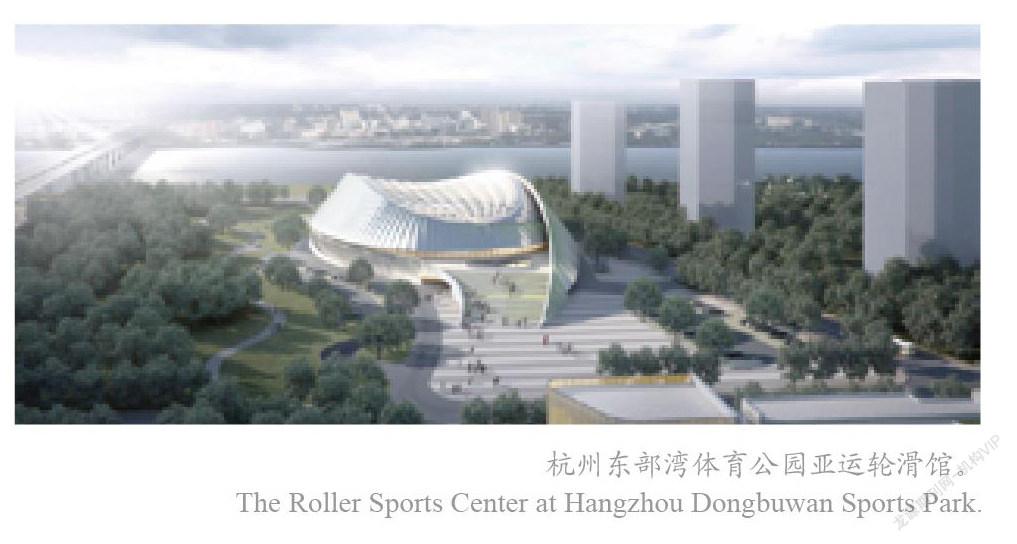节俭亚运:55个竞赛场馆中新建的仅12个
2021-12-08


节俭亚运:即充分利用现有场馆设施,做到能改不建、能修不换、能租不买、能借不租;探索市场开发机制创新,尤其是民营资本进入的机制创新,努力通过市场开发方式解决办赛主体资金。
上城区体育中心(原江干区体育中心)坐落于杭州CBD钱江新城,东靠之江路,西临富春路,地铁公交都可直达。
这里有体育场、全民健身活动中心、网球中心,设施好且价格实惠,工作日部分时段还免费开放,是周边居民运动健身的第一选择。
杭州2022年亚运会,上城区体育中心体育场将承担起足球比赛任务,为全面满足赛事要求并兼顾赛后综合利用,从2019年4月起,体育场就进入提升改造期,涉及竞赛场地、观众区域设施、赛事功能用房、赛事专用系统、媒体及转播区、安保设施、配套设施等工程。
作为杭州市中心一处重要的场馆群,该提升改造建设将杭州亚运会的“节俭”办赛理念体现在改造工作的每一处细节。
“体育场是露天的,常年风吹日晒雨淋。在前期的摸底工作中,我们将看台上1.4万张座椅全部拆下仔细检查了一遍,惊喜地发现,从2009年建造时就安装的这批座椅,过了11年竟然没有一张是破损的,本着节俭办赛原则,就继续用啦!”原江干区体育中心后勤部主任田坤生说,为了不浪费宝贵的水资源,他们还在足球场草坪下方安装了一整套雨水收集装置,可将过多的天然降水自动收集至雨水收集池,进行循环净化后再次利用。
事实上,杭州亚运会在筹办伊始就将绿色节俭的办赛理念落实在筹建的方方面面。
杭州亚组委在2020年度亚运场馆及设施建设工作会议上就明确提出,在满足赛事要求的同时,更着眼长远利用。一是倡导“能改不建”的理念:目前,57个竞赛场馆(含2个亚残运会独立场馆)中新建的仅12个,其他的都为改建、临建场馆;二是要求赛时赛后共谋划。赛时为赛事,赛后为城市:85%以上的比赛场馆确定了赛后运营单位,承接各类大型体育、文化、商贸、展览、娱乐活动,为城市和市民留下亚运遗产。整个奥体中心也已经明确赛后运营单位,如主体育场“大莲花”未来将会作为城市地标、国际赛事和大型群众性活动的主要承接地;三是设施器材细筹划:根据场馆赛时器材指导手册,按照“开发优先,能借不租,能租不买”的原则,协同各场馆做好器材的租借、采购。
能改不建
现在的上城区体育中心体育场外部目前设置了一圈围挡,内部施工有序进行中。
体育场的草坪在6月初种下新草,经历过梅雨季的雨水后长势喜人,远远望去已是一片翠绿,新的塑胶跑道还在铺设阶段。
据介绍,上城区体育中心体育场的改造工程目前已完成70%以上的进度,符合年初制订的计划。
原江干区体育中心后勤部主任田坤生年近七旬,退休后又被返聘,负责体育场的亚运会改造提升现场工作,他每天戴着安全帽在工地穿梭。
从2003年江干区体育中心(现划至上城区)一期开建起,田坤生就参与其中,“别看现在这一片那么热闹,2003年、2004年那会儿这里连房子都没有,我是看着体育中心一点点造起来的。很多学校的校运动会都放到这里开。”
田坤生说,该体育中心体育场投用的第一年,就参与协办了中国(杭州)国际龙狮邀请赛,当时的场面别提有多热闹了。
场馆建设中有很多地方都在践行着办赛理念。足球比赛场地对草坪要求很严格,为了达到洲际比赛的标准,上城区体育中心派人先后前往上海、江苏、广东等地,对多个体育场及草场调研学习草坪种植、草种选择经验。
后期施工中,从草坪喷灌到排水层、中粗砂层、种植层设置,层层把关,严格按照洲际赛事比赛场地要求。
此外,上城区体育中心在改造提升工程中还加入建设杭州亚运会亚运博物馆的内容(计划200平方米)。该博物馆届时将展出亚运“遗产”,亚运会后将向市民开放,真正做到全民共享亚运。
改造完成后,上城区体育中心有望成为钱江新城又一标志性建筑。杭州亚运会期间,这里将聚集中外来客欣赏高水平足球赛事;后亚运时代,这里也会是市民最喜爱的现代化、智能化全民健身场所。
全民共享
占地701亩的拱墅区运河体育公园场馆群是杭州亚运会乒乓球、曲棍球和霹雳舞比赛的承办地,是杭州市重点打造的一处以全民健身为主题,集亚运记忆、运河文化、体育培育为一体的综合性公园项目,建成后将成为杭州市最大的体育公园。
项目所在地由祥符桥村、花园岗村和方家埭村组成,区域内河道纵横,绿树成荫。随着杭州主城区不断扩大,这里早在十多年前便已成为拱墅区的一处城中村改造项目。因其得天独厚的自然条件,改造之初便被定位为公园,发挥“城市绿肺”职能。2015年,随着杭州市获得第19届亚运会的承办权,该区域的项目改造融入体育元素便被提上议程。
“在设计上,我们想把项目打造成既能满足承办亚运会比赛需求,又能在赛后满足人们对于健身需要的一处场所,同时‘城市绿肺的功能还不能丢。”杭州市拱墅区城中村改造指挥部的苏方声说,公园在建设规划过程中就已经为赛后改造留有余地,从而更好地让场馆服务于全民健身。
同时,为了减少项目建设对原河道生态环境的影响,项目最大范围保留了原有的北庄河、永兴河走向。“不破坏场地与周边原有水系的关系,维持原有水文条件并加以利用,保护区域生态环境。”苏方声说。
项目进展顺利,以良渚遗址玉器“琮”为造型的乒乓球馆、油纸伞造型的曲棍球场均已经基本完工。
节能施工
西子湖畔、黄龙洞旁,作為浙江省曾经规模最大、功能最全的体育综合体,黄龙体育中心的区位优势可谓得天独厚。然而作为亚运改造项目中规模最大、面积最广的工程,这样的优势也就成了劣势,改造产生的大量建筑垃圾如何处理成为一大难题。
传统处理方式一般是先将建筑垃圾装至工程车内,再由工程车直接运至郊外堆放。黄龙体育中心处于闹市区,周围交通较为拥堵,除去早晚高峰和夜间施工,每天留给建筑垃圾外运的时间只有10小时。除此之外,根据工程进度要求,建筑垃圾处理时间不能超过一个月,如果为了满足项目实际进度要求,大量机械工作产生的噪音也将对周围居民造成困扰。
浙江一建黃龙体育中心亚运会场馆改造工程项目经理金天红说,在考虑到传统方法的诸多弊端后,项目部在综合对比之后,决定采用移动反击式破碎站对建筑垃圾进行破碎循环利用。
“移动反击式破碎站可以将建筑垃圾破碎至需要的粒度,移动筛分站会自动根据物料粒径大小进行分类,而且距离设备超过50米,工作时产生的噪音不超过70分贝。”金天红说,废铁等金属也会被单独分拣出来,经过处理后的建筑垃圾,既可以作为干混砂浆、抹灰砂浆原料,也可以作为混凝土免烧砖原料,不仅环保、节能、绿色,还能实现建筑垃圾场内转运,大幅度提升工程进度。
Economical Asian Games
Economical Asian Games: Make full use of existing venues and facilities, and follow the principle that “unless absolutely necessary, renovation instead of new construction, repairment instead of replacement, renting instead of buying and borrowing instead of renting”; explore mechanisms of market innovation, especially the introduction of of private capital, and try to obtain enough funding through market.
Shangcheng Sports Complex (formerly Jianggan Sports Complex), is located in Hangzhous CBD area, the Qianjiang New Town, to the east of Zhijiang Road and the west of Fuchun Road, where the subway and buses can directly reach.
In the complex, there is a stadium, a national fitness center, a tennis center, with good facilities and affordable prices. It is open for free during some hours of the working day, making it the first choice for nearby residents to exercise and keep fit.
A number of football matches of the 2022 Asian Games in Hangzhou will be played at the stadium of the Shangcheng Sports Complex. To fully meet the requirements of the event and considering the post-event comprehensive utilization of the venue, since April 2019, workers have been renovating and upgrading the stadium, including the competition area, the audience area facilities, the media and broadcasting area, the security facilities and others.
As an important venue in the center of Hangzhou, this renovation project is an epitome of Hangzhous commitment to run an “economical” Asian Games.
“The stadium is roofless, exposed to sunlight and rain all year round, but during our inspection before renovation work started, we found to our delight that none of the 14,000 seats on the grandstand was damaged, even though they were installed in 2009,” said Tian Kunsheng, former director of the logistics department of the sports complex. “In line with the principle of being economical, we decided to continue to use them.” Tian said that to save water, they also installed a set of rainwater collection devices under the lawn of the football field, which can automatically collect excessive rainwater in to collection tanks for recycling and purification.
Covering an area of 701 acres, the Gongshu Canal Sports Park will host the events of table tennis, field hockey and breakdancing in the Asian Games. When completed, it will be the biggest sports park in Hangzhou, which will serve as a fitness center, a training venue as well as a place showcasing the culture Asian Games and the Grand Canal.
The site of the project sits at the three villages of Xiangfuqiao, Huayuanggang and Fangjiadai, where rivers crisscross and trees grow in abundance. “In terms of design, we hope to make it into a place that can meet both the requirements of the Asian Games and peoples fitness needs after the games, while still retaining its function as an ‘urban green lung,” said Su Fangsheng, who is working on the renovation project. Meanwhile, to reduce the impact of project construction on the ecological environment of the rivers, the project has only made minimum alteration to their original courses.
Situated next to the West Lake and the Huanglong Cave, the Huanglong Sports Center used to be Zhejiangs biggest sports complex with the most comprehensive functions and enjoys unique geographical advantages. However, as the largest and most extensive renovation project for the Hangzhou Asian Games, such advantages have become disadvantages, and how to deal with the sizeable amount of construction waste generated during the renovating process has become a thorny issue.
The traditional way of disposal is to first load the construction waste into the engineering vehicle, and then transport it directly to the suburbs for stacking. Huanglong Sports Center is in downtown, and traffic in the surrounding area is not ideal for waste transportation. Indeed, there are only 10 hours for outbound transportation every day. In addition, according to project schedule, the time spent for construction waste disposal should not exceed one month, to meet which also means more noise for nearby residents.
Considering the downside of the traditional disposal method, the project department decided to apply the mobile crushing station to break and recycle the construction waste, according to Jin Tianhong, project manager for the renovation project.
“The mobile crushing station can break the construction waste to the required particle size and the mobile screening station will automatically sort the material as per the particle sizes,” said Jin. “The noise generated during operation is not more than 70 decibels.” Jin said. Waste iron and other metals will also be separately sorted out, and the construction waste, after treatment, can serve as the raw materials for dry mortar and plastering mortar, as well as concrete bricks.
